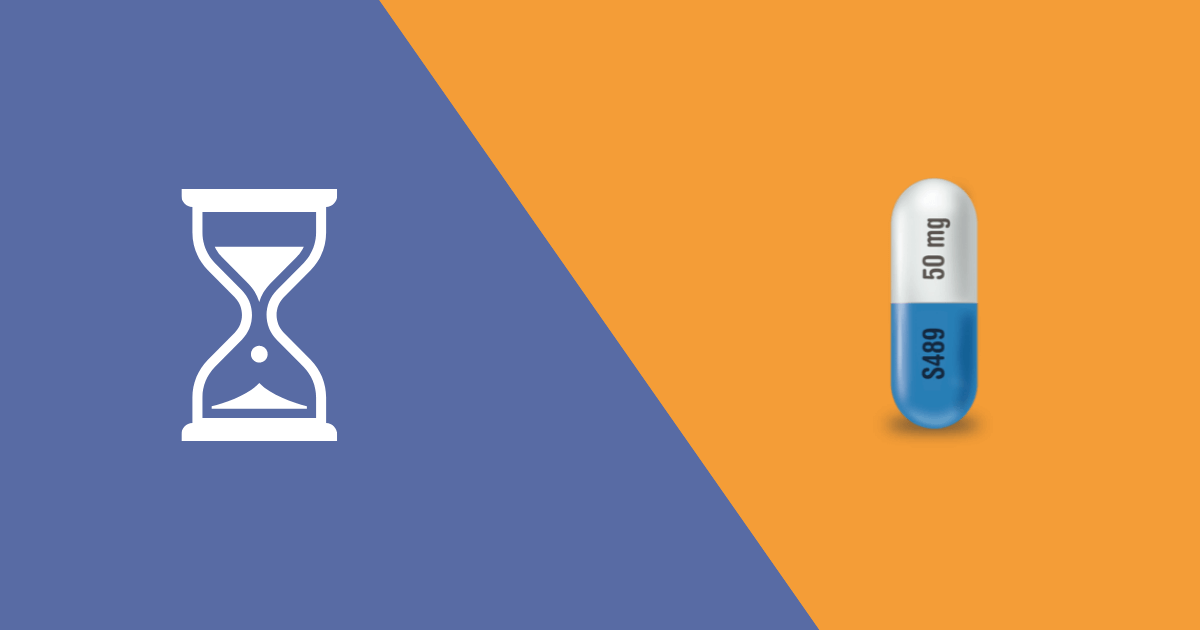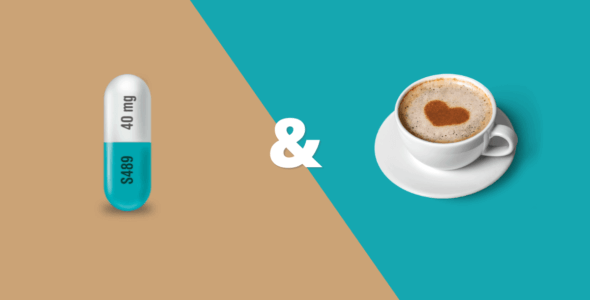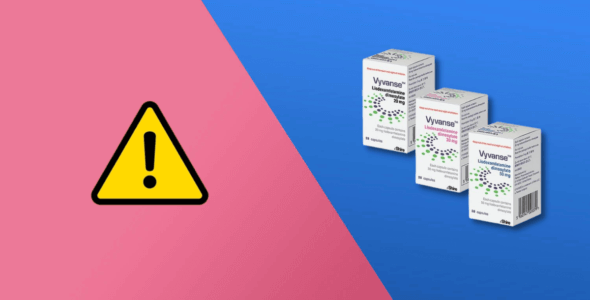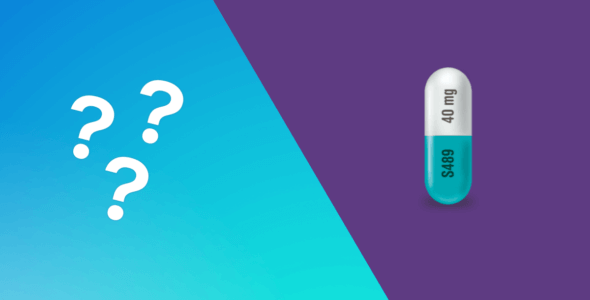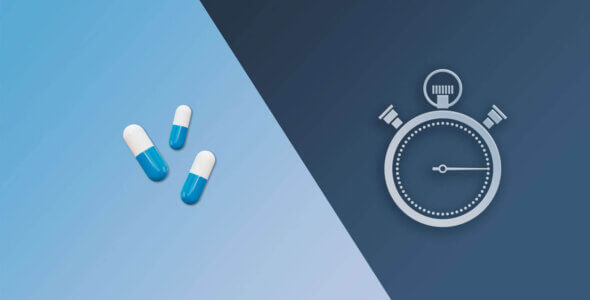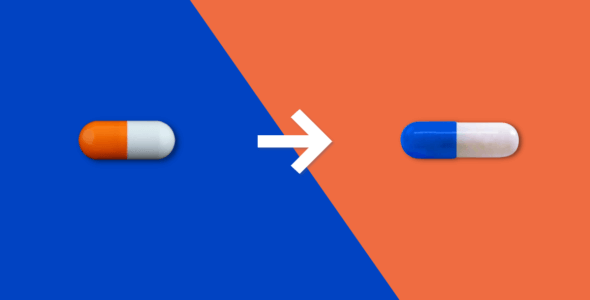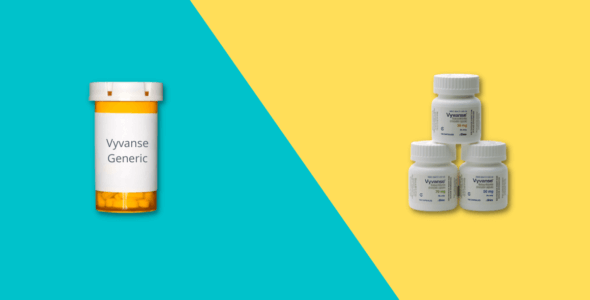Vyvanse withdrawal or crash: symptoms, signs, timeline and treatment
Table of contents
Vyvanse is an FDA-approved brand name medication manufactured by Shire PLC containing the active ingredient lisdexamfetamine dimesylate, a derivative of amphetamine. It is an ADHD treatment (Attention Deficit Hyperactivity Disorder) primarily but also treats moderate to severe binge eating disorder. It is a prescription drug belonging to a class of drugs known as Central Nervous System stimulants but is also classed as a Schedule II controlled substance.
As a controlled substance Vyvanse can be used recreationally but unlike other amphetamines such as Adderall and Ritalin, it has less potential for abuse because it is slower acting and can’t be absorbed quicker if it’s crushed or ground up. Its prodrug formulation deters patients from seeking immediate stimulation by snorting but Vyvanse abuse can still occur.
Vyvanse is a prescription stimulant therefore when someone takes Vyvanse, as soon as the effects wear off, it is likely they will experience a crash. If they stop taking Vyvanse altogether, they may experience withdrawal symptoms. Let’s take a look at crash and withdrawal symptoms, signs, timelines, and treatment.
How does Vyvanse work?
By working on the central nervous system Vyvanse increases activity in areas of the brain that help you with your concentration, behavior, and energy levels. It works specifically on the brain chemicals dopamine and norepinephrine. Dopamine in particular is involved in allowing you to feel pleasure, focus, and find things interesting. Stimulant ADHD medications reduce the symptoms of ADHD such as inattention, poor decision making, and poor impulse control, to make the condition much less of a daily problem.
The most common side effects in adults taking Vyvanse are a decreased appetite, dry mouth, and trouble sleeping. More severe side effects of Vyvanse are cardiovascular problems, such as a fast heart rate, increased blood pressure, or in rare cases, chest pain or heart attack.
For Vyvanse to start working in your body, lisdexamfetamine must react with your blood and be converted into the active drug dextroamphetamine. Vyvanse is a prodrug, meaning it is converted from an inactive form into an active form in your body by chemicals or enzymes.
Vyvanse has less potential to be used recreationally than other amphetamines such as Adderall, Concerta, and Ritalin (methylphenidate), as it’s slower acting, and won’t be absorbed quicker if it’s crushed or ground up. The prodrug formulation deters patients from seeking immediate stimulation by snorting but Vyvanse abuse can still occur.
Get your Vyvanse medication for only $49 per month
Get StartedVyvanse crash vs Vyvanse withdrawal
Withdrawal and crashes can both be difficult, but they differ greatly in their symptoms.
Withdrawals happen when someone stops taking Vyvanse; symptoms of withdrawal occur approximately 36 hours after the last dose.
Crash episodes typically come on more gradually over a longer period of usage and they’re also easier to manage if you notice them early on rather than waiting until it’s too late.
Vyvanse crash
When you start taking Vyvanse for the first time, your doctor may likely prescribe the lowest dosage possible for this medication. This helps minimize side effects as your body will adjust and an effective dose is determined based on how you respond. As the day progresses, there may be something called a “crash” which occurs in some people around lunchtime or early afternoon hours as the medication wears off; however it can also happen if doses are missed.
Symptoms of this crash can include anxiousness, tiredness, or feeling irritable. More often than not, people with ADHD will notice a return of their symptoms (as there is not enough drug in their system to manage the symptoms).
If you are experiencing problems with a Vyvanse crash, it is recommended that you do the following:
Take Vyvanse exactly as prescribed by your doctor. There is a risk of a much more severe crash when taking the medication at a dose higher than prescribed by your doctor, or when taking the medication in a method other than what is prescribed by your doctor, including injecting the medicine.
You should take your Vyvanse medication every morning at the same time. Taking Vyvanse regularly will help to regulate the levels of the medication in your body, and also help to avoid a crash.
Tell your healthcare provider if you are experiencing problems while taking the medication or if you regularly feel an afternoon crash. Your healthcare provider may decide to change the dosage of your Vyvanse to help with effectively managing your symptoms.
Vyvanse withdrawal timeline
Vyvanse withdrawal symptoms follow a specific timeline. Although there are specific factors that can change the length of time withdrawal lasts, there is a common timeline that you can expect:
The effects of Vyvanse will begin to set 24 hours after your last dose. You may experience depression, cravings for Vyvanse, increased appetite, sleeping for long stretches, and fatigue.
Withdrawal symptoms are more noticeable 3 -5 days into withdrawal when they reach their peak. Insomnia and mood swings may set in at this point.
Day 6 -7 side effects begin to dispel but some of the psychological symptoms like depression may continue if left untreated.
Factors that affect Vyvanse withdrawal
When Vyvanse is stopped abruptly, there is a sudden decrease in the amount of neurotransmitters such as dopamine and norepinephrine in your brain. This reduction produces withdrawal symptoms because the body is not accustomed to functioning at a lower level of stimulation.
There are some factors that may change how long a Vyvanse withdrawal can last, including:
- Quitting method (tapering, medical detox, or cold turkey)
- Frequency and dose use
- How long Vyvanse was used
- Mental health
- Physical health complications
- History of combining the medication with another substance
When an individual is aware that they are going to be reducing or stopping the use of Vyvanse, they can take certain steps to plan on reducing the symptoms of their comedown.
Some steps they can take include:
- Do not use any additional stimulants, such as cigarettes or caffeinated drinks if you want to get enough quality rest and feel energized during the day without feeling exhausted from lack of energy.
- Eat well. Staying hydrated and getting a good range of vitamins and nutrients can have a powerful effect on a person’s overall mood. Maintain an active lifestyle by engaging yourself throughout each day with productive activities like exercise which has been shown effective at improving both mental health as well physical wellness.
- Create a plan for bedtime and establish an ideal sleeping environment. This includes creating the right kind of lighting in your room, and turning off all electronic devices at least two hours before sleep time so you don’t keep yourself awake with stimulating thoughts or light displays from devices like smartphones. They can disrupt our circadian rhythms which makes it difficult to fall asleep easily when we want to. You could also try adding some aromatherapy oils onto pillows such as lavender or jasmine to help you relax and drift off.
- Keeping a schedule is important for managing stress. But when you are feeling overwhelmed with work or other obligations, it’s best to avoid planning anything that might make your anxiety worse. The best way to relieve stress is by finding an activity that you enjoy and can focus on. You may want to try deep breathing, meditation, or listening to music for some relaxing time.
- Specific drugs and substances may be harmful to your sleep, so it’s best not to use them. These substances may further disturb a person’s sleep and extend the comedown. Alcohol is one such drug that can have dismissing effects on the body if consumed in large quantities or near bedtime.
Vyvanse dependence and withdrawal
Vyvanse is a stimulant medication and a controlled substance meaning it has a risk of dependence. Your healthcare provider will carefully monitor your use of this medication. Controlled substances are known to be habit-forming and may lead to drug abuse.
Stimulant drugs including Vyvanse when taken in large doses may cause a feeling of intense happiness or euphoria as well as more focus and alertness. Some people may misuse these medications to intensify these effects. However, misuse or overuse may lead to Vyvanse addiction and withdrawal symptoms.
Dependence
There are many dangers to taking amphetamines at higher doses and for longer periods of time. Physical dependence means you need the drug in order to feel normal, but stopping can lead to symptoms like anxiety, confusion, and mood swings which could turn into something worse such as hallucinations. You are also at increased risk of overdose, brain damage, and death. Psychological dependence also poses risks including cravings so strong they’re difficult to control and become a drug addiction.
Signs of Vyvanse abuse or addiction in a loved one include dilated pupils, sweating, reduced appetite, insomnia, anxiety, hallucinations, and paranoia. There are increased risks of overdosing, brain damage, or death. Long-term effects of abuse can include addiction, heart problems, psychosis, paranoia, and seizures.
A substance use disorder requires structured help and guidance from an inpatient treatment center or outpatient treatment program that specializes in substance abuse. Under the guidance of a medical professional, you can receive addiction treatment such as a detox program and other treatment options specifically suited to you. Consult your doctor for medical advice about Vyvanse detox programs and additional information can be found by visiting the American Addiction Centers’ article on the topic.
Withdrawal
Withdrawal symptoms can occur when stopping to take Vyvanse, even if you take Vyvanse exactly as the medication was prescribed and then you stop taking it suddenly. Withdrawal symptoms can include:
- anxiety
- depression
- shakiness
- trouble sleeping
- irritability
- sweating
If you decide that you would like to stop taking Vyvanse, speak with your healthcare provider who may instruct you to slowly taper off the drug in order to help you with avoiding or reducing the withdrawal symptoms. Vyvanse withdrawal is short-term and symptoms will likely fade after a few days; however, they could last for several weeks if you have been taking Vyvanse for a long period of time.
Read the full prescribing information for Vyvanse and always speak with your healthcare provider for medical advice about your medicine so they can monitor and evaluate your condition. Always inform your healthcare provider of all the medical conditions you have, and any medications you are taking including over-the-counter meds and supplements.
Medically reviewed
A medical professional has reviewed this article.


Jamie Winn, PharmD
Jamie Winn, PharmD
Dr. Jamie Winn received his Doctor of Pharmacy in 2002 from the University of South Carolina College of Pharmacy, Columbia, SC. Jamie is a medical reviewer for NiceRx.

